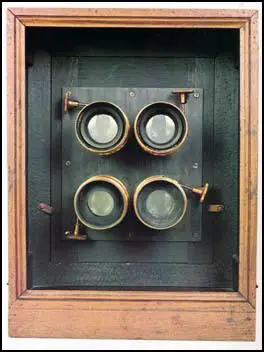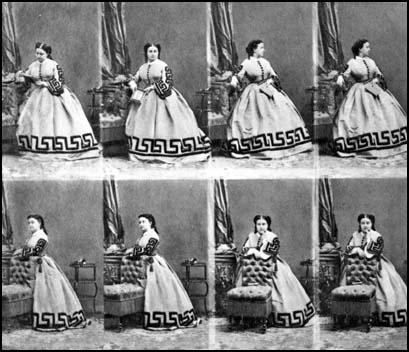PART 5 :THE CARTE DE VISITE
CRAZE ( 1862-1870 )
The
Carte de Visite Format
In the early 1850s, a number of French photographers put forward
the idea of mounting a small photographic portrait on a card the
same size as the customary calling card. In 1854, a Parisian photographer
called Andre Adolphe Disderi (1819-1889) devised a multi-lens
camera with a collodion plate that could be moved to capture between
four and twelve small portraits on a single glass negative. This
meant that a photographer equipped with a camera with four lenses
could take a total of eight portraits, in a variety of poses,
all on one camera plate. From the resulting negative, the photographer
could produce a set of contact prints on albumenized paper, which
could then be cut up and pasted on to small cards. The card mounts
were the same size as conventional visiting cards (roughly 21/2
inches by 41/4 inches or 6.3 cm by
10.5 cm) and so this new format of photograph came to be known
as 'carte de visite' - the French term for visiting card.
 |
 |
LEFT:An
early carte de visite camera. RIGHT: An
uncut sheet of 8 carte de visite portraits by Disderi. c1862
C
In 1857, Marion and Co, a French firm of photographic dealers
and publishers, introduced the carte de visite (cdv) format
to England. By 1859, the carte de visite portrait was fashionable
in Paris, but the new format was not immediately popular in this
country.
CLICK HERE TO CONTINUE
Celebrity Cartes